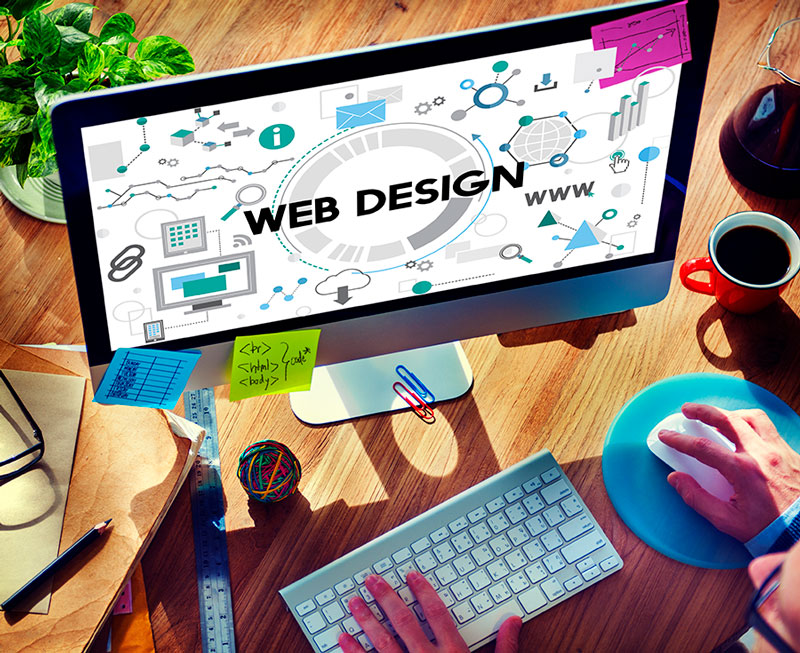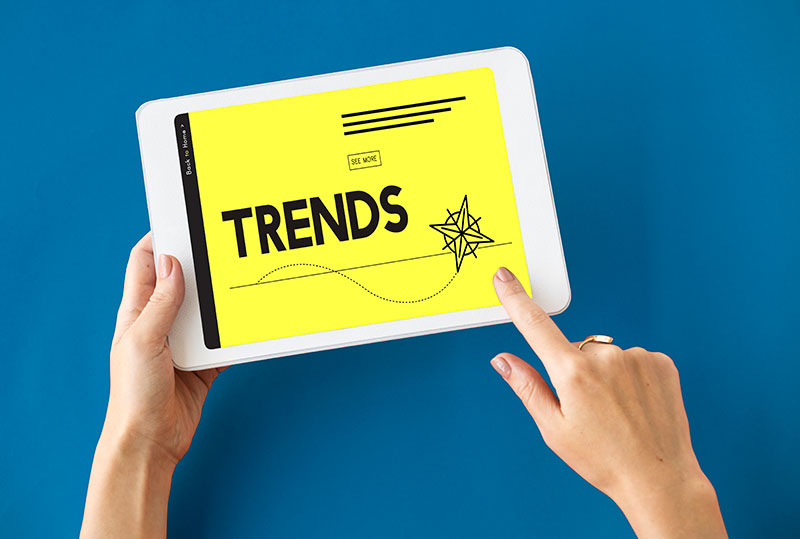
Introduction
Web design has undergone a significant transformation since the inception of the internet. From simple, text-heavy pages to dynamic, visually stunning websites, the evolution of web design has been driven by technological advancements, changing user expectations, and the growing importance of online presence for businesses. This article explores the journey of web design, its impact on small, medium, and large businesses, and the latest trends shaping the industry. Additionally, we’ll present a case study demonstrating how our web solutions transformed a small business.

The Evolution of Web Design
The Early Days: 1990s
In the early 1990s, web design was rudimentary. Websites were primarily text-based, with minimal graphics and limited interactivity. The use of HTML was basic, and the design was constrained by low bandwidth and slow internet speeds. Websites were static, with no dynamic content or interactive elements.
The Rise of Multimedia: Late 1990s to Early 2000s
The late 1990s saw the introduction of Flash, which enabled designers to create more interactive and visually engaging websites. This period also marked the beginning of CSS (Cascading Style Sheets), allowing designers to separate content from design and manage the look and feel of websites more efficiently.
The Web 2.0 Era: Mid-2000s
The mid-2000s brought the Web 2.0 era, characterized by the rise of user-generated content, social media, and enhanced interactivity. Websites became more dynamic, with features like blogs, forums, and social networking integrations. Design trends shifted towards simplicity and usability, emphasizing clean layouts and intuitive navigation.
Responsive Design: 2010s
As mobile internet usage surged, responsive web design became crucial. Introduced around 2010, responsive design allows websites to adapt to different screen sizes and devices, providing a seamless user experience across desktops, tablets, and smartphones. This era also saw the rise of content management systems (CMS) like WordPress, making web design more accessible to non-technical users.
Modern Web Design: Late 2010s to Present
Modern web design is marked by minimalism, speed, and user-centric approaches. Techniques like mobile-first design, progressive web apps (PWAs), and single-page applications (SPAs) have gained popularity. Visual aesthetics have evolved to include flat design, material design, and the use of micro-interactions to enhance user engagement.

Impact on Businesses
Small Businesses
For small businesses, a well-designed website can level the playing field with larger competitors. A professional online presence helps build credibility, reach a wider audience, and drive sales. E-commerce capabilities allow small businesses to sell products and services online, while local SEO strategies help attract nearby customers.
Medium-Sized Businesses
Medium-sized businesses benefit from sophisticated web design by streamlining operations and enhancing customer engagement. Features like customer portals, online booking systems, and interactive product catalogs improve user experience and operational efficiency. A strong online presence supports brand development and can lead to increased market share.
Large Enterprises
For large enterprises, web design is crucial for maintaining brand consistency across global markets. Advanced functionalities, such as enterprise-level e-commerce platforms, data analytics, and customer relationship management (CRM) integrations, are essential. High-quality web design also plays a key role in digital marketing campaigns and online reputation management.

Latest Web Design Trends: What’s In and What’s Out
What’s In
- Dark Mode: Increasingly popular due to its aesthetic appeal and power-saving benefits on OLED screens, dark mode provides a sleek, modern look and reduces eye strain.
- Minimalism and White Space: Clean, uncluttered designs with ample white space improve readability and focus attention on key content.
- Micro-Interactions: Small, interactive animations enhance user engagement and provide feedback, making websites more intuitive and enjoyable to use.
- Neumorphism: Combining skeuomorphism and flat design, neumorphism uses soft shadows and highlights to create a more tactile user interface.
- Voice User Interface (VUI): With the rise of voice assistants, integrating voice search and commands into websites enhances accessibility and user experience.
- 3D Elements and Illustrations: Incorporating 3D graphics and custom illustrations adds depth and uniqueness to web designs, making them more engaging.
- Asymmetrical Layouts: Breaking away from traditional grid layouts, asymmetrical designs create dynamic, visually interesting pages.
- Augmented Reality (AR): AR integrations, especially in e-commerce, allow users to visualize products in their environment before making a purchase.
What’s Out
- Flash Animations: Once popular, Flash is now obsolete due to its incompatibility with modern browsers and security vulnerabilities.
- Overly Complex Designs: Complex designs with excessive animations and elements can overwhelm users and slow down page loading times.
- Autoplay Videos and Background Music: These can be intrusive and negatively impact user experience, especially when they play without user consent.
- Stock Photos: Generic stock photos are being replaced by authentic, custom imagery that better represents the brand and connects with users.

Case Study: How Our Web Solutions Transformed a Small Business
Background
XYZ Bakery, a small local bakery, struggled to attract customers beyond their immediate neighborhood. Their existing website was outdated, non-responsive, and lacked e-commerce capabilities. They approached us to revamp their online presence and expand their customer base.
The Transformation
- Responsive Design: We developed a mobile-first, responsive website ensuring a seamless experience across all devices. This improved user engagement and accessibility.
- E-Commerce Integration: By incorporating an e-commerce platform, XYZ Bakery could now sell their products online, offering delivery and pickup options. This opened up new revenue streams and attracted customers from a wider area.
- Local SEO: Optimizing the website for local search helped XYZ Bakery appear in local search results and Google Maps, driving foot traffic to their physical store.
- Visual Appeal: Using high-quality images of their products, a clean layout, and interactive elements, we created an inviting and visually appealing website. This enhanced their brand image and made the site more engaging.
- Customer Engagement: Adding features like a blog, customer reviews, and a newsletter sign-up encouraged interaction and built a community around the brand. We also integrated social media feeds to keep the website content fresh and dynamic.
Results
- Increased Traffic: Website traffic increased by 150% within the first three months.
- Higher Sales: Online sales accounted for 30% of total revenue within six months.
- Improved Customer Engagement: The bakery saw a significant rise in customer interactions through reviews, social media, and newsletter subscriptions.
- Enhanced Brand Image: The modern, professional website elevated XYZ Bakery’s brand, attracting new customers and retaining existing ones.
- Content Marketing: Create high-quality, shareable content that other websites will want to link to.
- Guest Blogging: Write articles for other reputable sites in your industry. Ensure you get a backlink to your site in return.
- Outreach: Reach out to industry influencers and bloggers to promote your content and request backlinks.
Conclusion
The evolution of web design has been a transformative force for businesses of all sizes. From the early days of simple, static pages to today’s dynamic, user-centric websites, web design continues to evolve, driven by technological advancements and changing user expectations. Modern web design trends emphasize aesthetics, usability, and interactivity, helping businesses engage with their audience and achieve their goals.
Our case study of XYZ Bakery demonstrates the profound impact a well-designed website can have on a small business. By embracing the latest web design trends and focusing on user experience, businesses can enhance their online presence, attract more customers, and drive growth in an increasingly digital world.

0 Comments